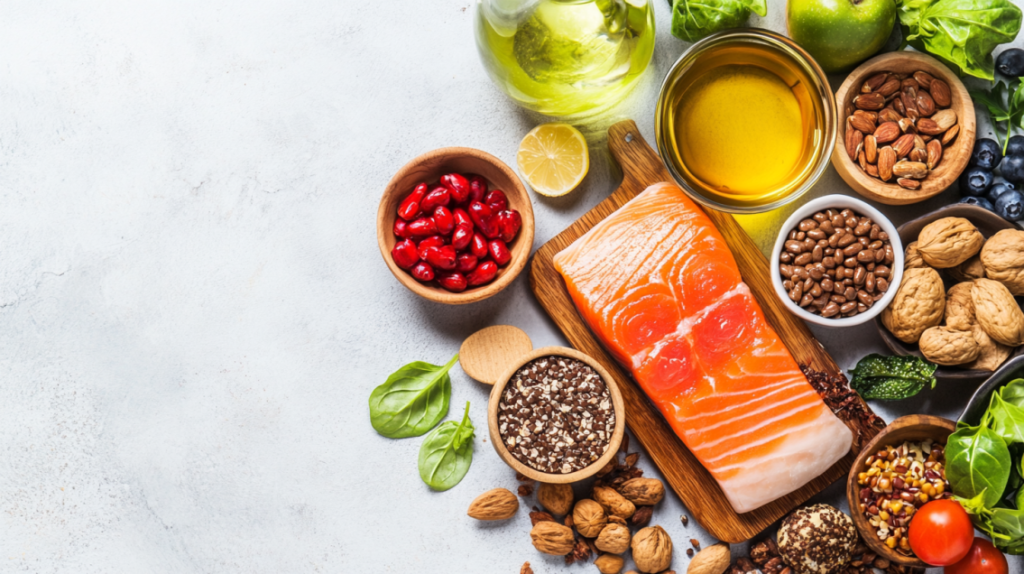Welcome to WeeZful – Your Guide to Healthy Living! My name is Nyla, and I’m passionate about helping people make smarter food choices for a healthier, happier life. Through my website, I share expert-backed nutrition tips, wholesome recipes, and practical wellness advice to make healthy eating simple, enjoyable, and sustainable. Whether you’re looking to boost your energy, manage your weight, or simply adopt a better lifestyle, you’re in the right place!
In this article, we’ll dive into how to plan a balanced diet for weight loss. A balanced diet is not just about cutting calories; it’s about nourishing your body with the right foods that can help you shed those extra pounds while feeling satisfied and energized. So, let’s get started!
Understanding the Basics of a Balanced Diet
What is a Balanced Diet?
A balanced diet includes a variety of foods in the right proportions to provide your body with essential nutrients. It typically consists of:
- Fruits and Vegetables: These should make up a significant portion of your meals.
- Proteins: Lean meats, fish, beans, and legumes are great sources.
- Whole Grains: Foods like brown rice, quinoa, and whole-grain bread are excellent choices.
- Healthy Fats: Incorporate sources like avocados, nuts, and olive oil.
Why is a Balanced Diet Important for Weight Loss?
When you plan a balanced diet for weight loss, you’re not just focusing on calorie reduction. Instead, you’re ensuring your body gets the nutrients it needs to function optimally. This approach can help you feel full longer, reduce cravings, and maintain energy levels throughout the day.
Setting Realistic Goals for Weight Loss
Defining Your Weight Loss Goals
Before jumping into meal planning, it’s crucial to set realistic weight loss goals. Aim for a gradual weight loss of 1-2 pounds per week. This approach is sustainable and healthier than drastic measures.
Tracking Your Progress
Consider keeping a food diary or using a mobile app to track your meals and weight loss progress. This can help you stay accountable and make necessary adjustments to your diet.

How to Plan a Balanced Diet for Weight Loss
Creating Your Balanced Diet Plan
Assessing Your Caloric Needs
To plan a balanced diet for weight loss, start by determining your daily caloric needs. This can vary based on age, gender, activity level, and weight loss goals. Online calculators can help you estimate your needs.
Building Your Meal Plan
Breakfast Ideas
- Oatmeal with Fruits: A bowl of oatmeal topped with berries and a sprinkle of nuts can kickstart your day.
- Greek Yogurt Parfait: Layer Greek yogurt with granola and fresh fruit for a protein-packed breakfast.
Lunch Options
- Quinoa Salad: Combine quinoa with mixed greens, cherry tomatoes, and a light vinaigrette.
- Grilled Chicken Wrap: Use a whole-grain wrap filled with grilled chicken, lettuce, and avocado.
Dinner Choices
- Baked Salmon with Veggies: Salmon is rich in omega-3 fatty acids, and pairing it with steamed broccoli makes for a nutritious meal.
- Stir-Fried Tofu and Vegetables: A quick stir-fry with tofu, bell peppers, and snap peas is both satisfying and healthy.
Snacks to Include
- Nuts and Seeds: A handful of almonds or sunflower seeds can curb hunger between meals.
- Fresh Fruits: Apples, bananas, or carrot sticks are great for a quick snack.
Incorporating Variety and Flexibility
Mixing Up Your Meals
Eating the same foods can get boring, so it’s essential to mix things up. Try new recipes or different cooking methods to keep your meals exciting.
Allowing for Treats
Planning a balanced diet for weight loss doesn’t mean you have to say goodbye to your favorite treats. Allow yourself occasional indulgences to avoid feelings of deprivation.
Hydration and Its Role in Weight Loss
Importance of Staying Hydrated
Drinking enough water is crucial when planning a balanced diet for weight loss. Sometimes, our bodies confuse thirst with hunger. Aim for at least 8 glasses of water a day, and consider herbal teas or infused water for variety.
Limit Sugary Drinks
Cutting out sugary drinks like sodas and juices can significantly reduce your calorie intake. Opt for water, sparkling water, or herbal teas instead.
Mindful Eating Practices
What is Mindful Eating?
Mindful eating involves paying attention to your food, savoring each bite, and recognizing your body’s hunger and fullness cues. This practice can help you enjoy your meals more and prevent overeating.
Tips for Mindful Eating
- Eat Slowly: Take your time to chew and savor your food.
- Limit Distractions: Try to eat without screens or other distractions to focus on your meal.
The Role of Exercise in Weight Loss
Combining Diet with Exercise
While a balanced diet is crucial for weight loss, incorporating regular physical activity can enhance your results. Aim for at least 150 minutes of moderate exercise each week.
Finding Activities You Enjoy
Choose activities that you enjoy, whether it’s dancing, swimming, or hiking. This will make it easier to stick to your exercise routine.

Staying Motivated on Your Weight Loss Journey
Building a Support System
Having a support system can make a significant difference in your weight loss journey. Share your goals with friends or family, or consider joining a weight loss group for encouragement.
Celebrating Small Wins
Don’t forget to celebrate your progress, no matter how small. Each step forward is a victory worth acknowledging!
Conclusion
Planning a balanced diet for weight loss is about more than just cutting calories; it’s about nourishing your body with the right foods and making sustainable lifestyle changes. By understanding the basics of a balanced diet, setting realistic goals, and incorporating variety and flexibility, you can create a meal plan that works for you. Remember, it’s a journey, not a race, so be patient with yourself and enjoy the process!
Thank you for being here! I truly appreciate your support and interest in leading a healthier lifestyle. If you found this article helpful, please consider sharing it with your friends and family to inspire better food choices. Don’t forget to follow me on Facebook and Instagram for daily nutrition tips, wholesome recipes, and wellness insights. Your engagement means the world to me, and I can’t wait to continue this journey toward better health with you!
FAQs
1. How many calories should I consume for weight loss?
Your caloric needs depend on various factors, including age, gender, and activity level. Generally, a deficit of 500-1000 calories per day can lead to a safe weight loss of 1-2 pounds per week.
2. Can I lose weight without exercising?
Yes, it’s possible to lose weight through diet alone. However, combining a balanced diet with regular exercise can enhance your results and improve overall health.
3. How can I stay motivated during my weight loss journey?
Set realistic goals, track your progress, and celebrate small victories. Surround yourself with supportive friends or family, and don’t hesitate to seek professional guidance if needed.
4. Is it okay to have cheat meals?
Absolutely! Allowing yourself occasional treats can help prevent feelings of deprivation and make it easier to stick to your balanced diet in the long run.
5. How do I know if I’m eating a balanced diet?
A balanced diet includes a variety of foods from all food groups in the right proportions. Pay attention to your body’s hunger and fullness cues, and aim for a colorful plate filled with fruits, vegetables, proteins, whole grains, and healthy fats.

